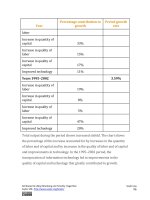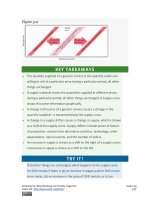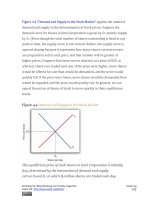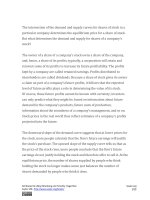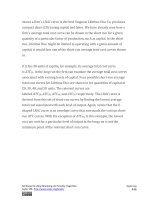Authors libby rittenberg 489
Bạn đang xem bản rút gọn của tài liệu. Xem và tải ngay bản đầy đủ của tài liệu tại đây (363.79 KB, 1 trang )
Figure 9.9 "Shutting Down" shows a case where the price of radishes drops
to $0.10 per pound. Price is less than average variable cost, so Mr. Gortari
not only would lose his fixed cost but would also incur additional losses by
producing. Suppose, for example, he decided to operate where marginal
cost equals marginal revenue, producing 1,700 pounds of radishes per
month. Average variable cost equals $0.14 per pound, so he would lose
$0.04 on each pound he produces ($68) plus his fixed cost of $400 per
month. He would lose $468 per month. If he shut down, he would lose only
his fixed cost. Because the price of $0.10 falls below his average variable
cost, his best course would be to shut down.
Figure 9.9 Shutting Down
The market price of radishes drops to $0.10 per pound, so MR3 is below
Mr. Gortari’sAVC. Thus he would suffer a greater loss by continuing to
operate than by shutting down. Whenever price falls below average
variable cost, the firm will shut down, reducing its production to zero.
Shutting down is not the same thing as going out of business. A firm shuts
down by closing its doors; it can reopen them whenever it expects to cover
Attributed to Libby Rittenberg and Timothy Tregarthen
Saylor URL: />
Saylor.org
489
